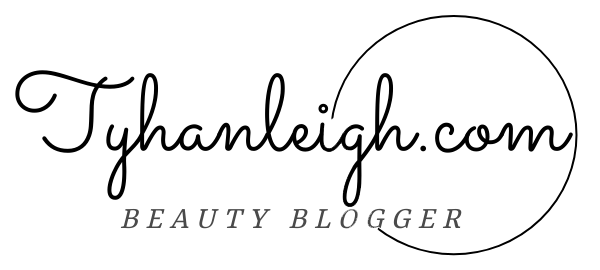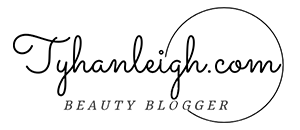Personal Fashion Stylist – At 35, many women find themselves at the pinnacle of their professional careers, where presenting a polished and sophisticated image becomes crucial. Crafting a professional look that blends elegance with authority can be both empowering and inspiring. But how do you create a wardrobe that reflects your experience and confidence while staying stylish and relevant? In this article, we’ll explore key fashion tips and outfit ideas to help you achieve the perfect professional look for a 35-year-old woman. From timeless suits to chic dresses, discover how to dress for success and make a lasting impression in any professional setting.
Understanding the Professional Look
Achieving a professional look is more than just wearing a suit or a pair of heels. It is about presenting oneself in a way that exudes confidence, competence, and credibility. For a 35-year-old woman, this can involve a blend of personal style and professional standards that reflect maturity and expertise.
Importance of a Professional Appearance
A professional appearance is crucial in building first impressions. It can impact how colleagues, clients, and superiors perceive you, influencing your career trajectory. Dressing well can boost your confidence, improve productivity, and open doors to new opportunities.
Personal Grooming
Skincare Routine
Maintaining healthy skin is the foundation of a polished look. At 35, the focus should be on hydration, anti-aging, and sun protection. Incorporate a daily routine that includes cleansing, toning, moisturizing, and applying sunscreen. Using products with retinoids and antioxidants can help reduce fine lines and maintain a youthful glow.
Haircare Tips
Healthy, well-groomed hair is a significant aspect of a professional appearance. Regular trims, appropriate hair care products, and hairstyles that suit your face shape can enhance your overall look. Consider professional blowouts or simple styles like a sleek ponytail or a classic bob.
Makeup Essentials
Makeup should enhance your natural features without being overpowering. Essentials include a good foundation, concealer, mascara, and a neutral lipstick. Subtle contouring and highlighting can add definition to your face, while a well-groomed brow can frame your features.
Wardrobe Basics
Key Pieces Every Woman Should Own
Building a professional wardrobe starts with key pieces that can be mixed and matched. Essentials include a well-fitted blazer, a pair of tailored trousers, a pencil skirt, a white blouse, and a versatile dress. These items form the basis of a functional and stylish professional wardrobe.
Building a Versatile Wardrobe
Investing in quality over quantity ensures your wardrobe remains timeless and relevant. Choose pieces that can transition from office to evening wear with minimal adjustments. Opt for neutral colours and classic cuts that won’t go out of style.
Other articles:
Office Attire
Business Casual
Business casual offers a balance between comfort and professionalism. Examples include dress pants paired with a blouse, or a knee-length dress with a cardigan. Avoid overly casual items like jeans or sneakers unless your office culture permits it.
Formal Wear
Formal wear is necessary for important meetings, presentations, and events. A tailored suit or a sheath dress with a blazer can convey authority and sophistication. Stick to neutral colours like black, navy, or grey for a polished look.
Seasonal Attire
Adjusting your wardrobe according to the season ensures comfort and appropriateness. Light fabrics and bright colours are ideal for spring and summer, while wool, tweed, and deeper hues work well in autumn and winter.
Accessories
Jewelry
Jewelry should complement your outfit without being distracting. Simple pieces like stud earrings, a delicate necklace, or a classic watch add a touch of elegance. Avoid overly large or flashy items that can be seen as unprofessional.
Bags and Purses
A structured handbag or tote in a neutral colour is both functional and stylish. Ensure it is large enough to carry essentials like documents, a laptop, and personal items without being bulky.
Footwear
Comfortable yet stylish shoes are a must. Classic pumps, loafers, or ankle boots in neutral tones can match various outfits. Ensure your shoes are clean and in good condition, as worn-out footwear can detract from an otherwise polished appearance.
Colour Coordination
Choosing the Right Colours
Select colours that complement your skin tone and reflect professionalism. Neutral shades like black, white, beige, and grey are safe bets. Incorporate pops of colour through accessories or statement pieces to add personality.
Mixing and Matching
Creating a cohesive look involves mixing and matching pieces effectively. Stick to a colour palette that allows for easy combination. Layering different textures and patterns within the same colour family can add depth to your outfit.
Fabric Choices
Comfort vs. Style
Choosing the right fabric is crucial for both comfort and appearance. Opt for breathable materials like cotton and linen in warmer months, and wool or cashmere in colder seasons. Blends that offer stretch can also enhance comfort without sacrificing style.
Seasonal Fabrics
Certain fabrics are better suited for specific seasons. Light, breathable fabrics like linen and cotton are ideal for spring and summer, while heavier materials like wool and tweed are perfect for autumn and winter.
Other articles:
Fit and Tailoring
Importance of a Good Fit
A well-fitted outfit can make a significant difference in your overall look. Ill-fitting clothes can appear sloppy and unprofessional. Invest in tailoring to ensure your clothes fit perfectly, enhancing your silhouette and boosting your confidence.
Tailoring Tips
Tailoring doesn’t have to be expensive. Simple adjustments like hemming pants, taking in seams, or shortening sleeves can transform off-the-rack items into custom-fit pieces. Build a relationship with a good tailor to maintain a well-fitted wardrobe.
Personal Style
Defining Your Style
Your personal style should reflect who you are while adhering to professional standards. Take inspiration from fashion icons, but adapt their looks to suit your body shape and preferences. Confidence in your style choices will shine through and enhance your professional presence.
Staying True to Yourself
It’s essential to stay true to yourself while dressing professionally. Don’t feel pressured to follow every trend. Instead, select pieces that make you feel comfortable and confident. Authenticity in your style can set you apart in the workplace.
Trends vs. Classics
Balancing Trends with Classic Pieces
Incorporating trends into a professional wardrobe can be done tastefully. Use trendy items as accents rather than the focus of your outfit. Balance them with classic pieces to maintain a professional appearance while staying current.
Investment Pieces
Investing in high-quality staples can save money in the long run. Items like a well-made blazer, a leather handbag, or a pair of durable shoes may have a higher upfront cost but will last longer and maintain their appearance better than cheaper alternatives.
Other articles:
Office Etiquette
Dress Code Policies
Understanding and adhering to your company’s dress code is crucial. Whether it’s business casual or formal, ensure your attire aligns with company standards. When in doubt, it’s better to be slightly overdressed than underdressed.
Dressing for Meetings and Presentations
When dressing for important meetings or presentations, aim for a polished and authoritative look. A tailored suit or a sophisticated dress can help you make a strong impression. Pay attention to details like polished shoes and minimal, elegant accessories.
Casual Fridays
Navigating Casual Attire in a Professional Setting
Casual Fridays allow for more relaxed attire, but it’s essential to maintain a professional look. Opt for smart casual pieces like dark jeans paired with a blazer or a casual dress with flats. Avoid overly casual items like flip-flops or graphic t-shirts.
Dos and Don’ts
Do opt for clean, well-fitted casual clothes. Don’t wear items that are too casual or revealing. Balance comfort with professionalism to maintain a polished look even on casual days.
Travel Wardrobe
Packing Smart for Business Trips
A smart travel wardrobe is essential for business trips. Pack versatile pieces that can be mixed and matched, and include a few formal items for meetings or dinners. Roll your clothes to save space and prevent wrinkles.
Versatile Pieces for Travel
Choose items that are easy to care for and don’t wrinkle easily. A neutral blazer, comfortable trousers, and a few versatile tops can create multiple outfits. Add a scarf or statement necklace to change up your look.
Layering Techniques
Creating Depth with Layers
Layering can add depth and interest to your outfits. Use different textures and lengths to create a cohesive look. A lightweight cardigan over a blouse, topped with a structured blazer, can add dimension to your outfit.
Seasonal Layering Tips
In colder months, layering is essential for warmth. Start with a base layer, add a middle layer like a sweater or cardigan, and top with a coat or jacket. In warmer months, lighter layers like a cotton blouse and a linen blazer can keep you comfortable and stylish.
Seasonal Style
Spring Essentials
Spring calls for lighter fabrics and brighter colours. A trench coat, pastel blouses, and floral dresses are perfect for this season. Incorporate lighter layers to adapt to changing temperatures.
Summer Must-Haves
In summer, opt for breathable fabrics like cotton and linen. Dresses, skirts, and lightweight trousers are ideal. Choose lighter colours to reflect heat and stay cool. Accessories like sunglasses and a wide-brimmed hat can add style and function.
Autumn Favourites
Autumn is the season for layering. Incorporate rich, warm colours like burgundy, navy, and mustard. Sweaters, cardigans, and lightweight jackets are essential. A versatile scarf can add both warmth and style.
Winter Staples
Winter requires warm, durable fabrics like wool and cashmere. A stylish coat, cozy sweaters, and insulated boots are must-haves. Layering is key to staying warm while maintaining a professional look.
Other articles:
Eco-Friendly Fashion
Sustainable Brands
Supporting sustainable brands can enhance your professional look while contributing to environmental conservation. Brands like Stella McCartney, Eileen Fisher, and Patagonia offer stylish, eco-friendly options.
Building an Eco-Friendly Wardrobe
Building an eco-friendly wardrobe involves choosing quality over quantity, buying second-hand, and supporting sustainable brands. Look for items made from organic or recycled materials and prioritize durability to reduce waste.
Cultural Sensitivity
Dressing Appropriately in Different Cultures
When working in or visiting different cultures, it’s crucial to respect local dress codes. Research cultural norms and dress codes before travelling. For example, in some cultures, modesty is important, and covering shoulders and knees might be required.
Respecting Dress Codes Abroad
Respecting local dress codes shows cultural sensitivity and professionalism. Adapt your wardrobe to align with local customs while maintaining your professional look. Simple adjustments like wearing a scarf or choosing longer skirts can make a significant difference.
Expert Opinions
Insights from Fashion Professionals
Fashion professionals offer valuable insights into achieving a professional look. Stylists suggest focusing on fit, fabric, and personal style to create a cohesive and polished appearance.
Quotes from Stylists and Designers
Renowned designers and stylists emphasize the importance of confidence and authenticity. “Fashion is about dressing according to what’s fashionable. Style is more about being yourself.” – Oscar de la Renta.
Personal Stories
Real-Life Examples
Hearing from real women who have successfully navigated their professional appearance can be inspiring. For instance, Jane, a marketing executive, shares how investing in a few key pieces transformed her work wardrobe and boosted her confidence.
Success Stories
Success stories highlight the impact of a professional appearance on career advancement. Sarah, a lawyer, credits her tailored wardrobe and attention to detail for her promotions and increased client trust.
Conclusion
Recap of Key Points
In conclusion, achieving a professional look involves a combination of grooming, wardrobe essentials, and personal style. Focus on fit, fabric, and versatility to build a cohesive and stylish wardrobe.
Encouragement for Further Exploration
Continue exploring your personal style while adhering to professional standards. Investing in quality pieces and paying attention to grooming can significantly enhance your professional appearance and confidence.



